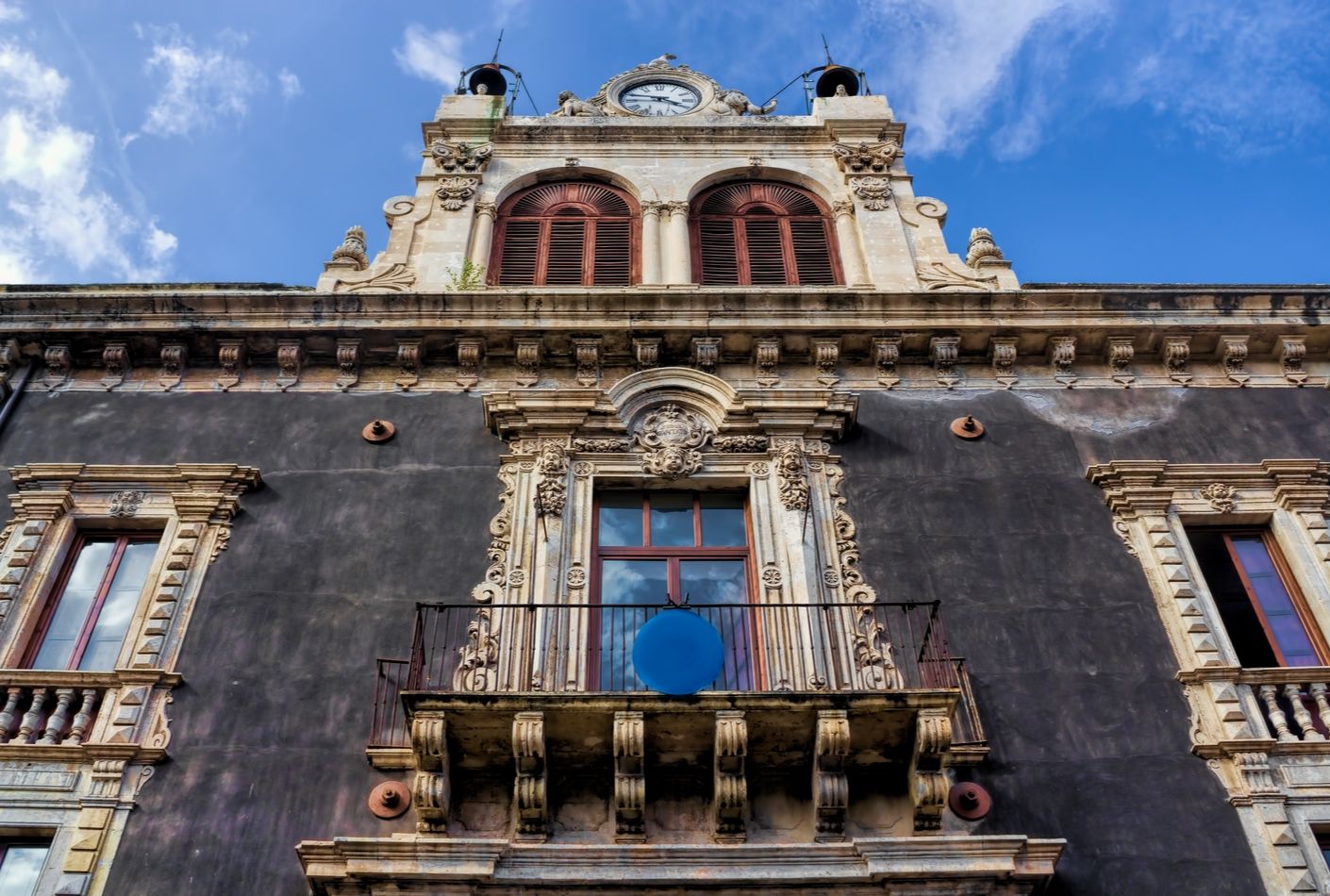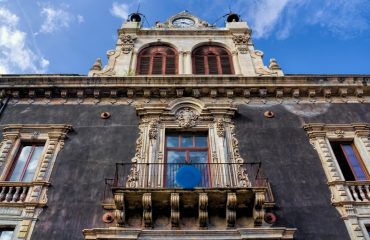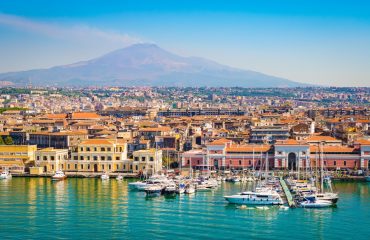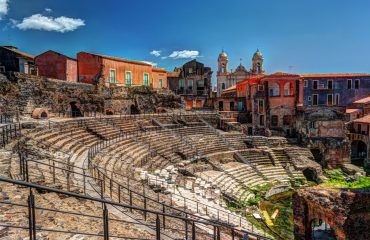BACK TO BLACK
From Syracuse to Taormina with a guided tour of Catania en route
- Discover the impact of Mount Etna on the evolution of Catania and where the nickname “The Black City” comes from
- Take in vibrant scenes of everyday life as you wander round the open-air fish market
- Turn the clock back to Roman times on a visit to the impressive remains of an ancient theatre
-
Category
-
Hobbies & Interests
-
Duration6-7 hours
-
Destination
BACK TO BLACK
From Syracuse to Taormina with a guided tour of Catania en route
Meet your private driver outside your accommodation in Syracuse, sit back and relax on the ride to Taormina. En route, stop to enjoy a guided tour of Catania.
Founded by the Greeks in the 8th century BC, Sicily’s second largest city crouches in the shadow of the mighty and unpredictable Mount Etna on the island’s eastern coast, bordered by the emerald waters of the Ionian Sea. Catania’s development and very existence are inextricably linked to this active stratovolcano, which has showered many curses on the city but also generously bestowed blessings upon it. Despite being threatened on several occasions by volcanic explosions, Catania managed to survive and thrive, owing its present appearance and fortunes precisely to the basalt rocks and fertile farming soil generated by Mount Etna’s eruptions.
In the 17th century two catastrophic events marked the course of Catania’s history. In 1669, following an outburst, a river of lava flowed into the city and just 24 years later, in 1693, a devastating earthquake razed Catania to the ground. The reaction of the surviving population to these disasters was stoic and proactive, an exemplary response and a triumphant symbol of Sicily’s resilience in the face of destruction and tragedy. Catania was lavishly rebuilt in Baroque style using the very material that spewed from the bowels of the earth. As you will certainly notice while you weave your way through Catania’s streets and squares, the most striking feature of this so-called “Black City” is the dark, charcoal palette of its lava stone buildings, remarkable evidence of Mount Etna’s crucial role in both flattening and shaping the city.
Your guide will meet you in Catania and make sure no fascinating detail eludes you as you explore its UNESCO-listed historic centre. Your tour begins by the Castello Ursino, an imposing fortress built by Emperor Frederick II of Hohenstaufen in the 13th century. Here you will understand how the city’s urban layout was changed significantly by Mount Etna’s fury. Originally built as a coastal stronghold, Castello Ursino was eventually stripped of its strategic sea front position by the massive lava spill of 1669 that pushed the sea back, creating a new coastline.
Now prick up your ears… can you hear the cries of hawkers? Follow the echoes of noisy traders and reach the nearby Pescheria. A visit to this open-air fish market will allow you to feel the pulse of daily life in Sicily and is a must for anyone who wants to get a flavour of the city. As you amble past stalls brimming with swordfish, mussels, clams, octopuses and all sorts of fresh seafood, your guide will ensure you take away an understanding of the local reality by zooming in on the rituals of hagglers and sellers.
Just a few steps away, in Piazza del Duomo, you will admire the splendid Baroque Cathedral of Saint Agatha, dedicated to the city’s patron saint. Originally erected in 1090 above the ancient Roman baths of Achilles, on the very site where Saint Agatha was martyred in 251, the church was completely rebuilt after the 1693 earthquake. Inside it hosts the tombs of the city’s great and good, including kings, bishops and Catania’s most famous son, composer Vincenzo Bellini. A fresco recording the 1669 eruption, which features Mount Etna in the background and the lava perilously approaching the city, is also among the attractions.
From here, enjoy a leisurely stroll down Catania’s two main thoroughfares, Via Etnea and Via Crociferi, flanked by a parade of shops, cafes and elegant 18th century palazzi, then reach the last stop on your tour. Shielded from view behind the buildings along Via Vittorio Emanuele and Via Teatro Greco, you will find the impressive remains of a Roman theatre. Built in the 2nd century AD on the site of an earlier Greek theatre, the structure could accommodate up to 7,000 spectators who used to gather here to watch water shows. An ingenious mechanism allowed the orchestra area to be drained and flooded when required with water from the subterranean River Amemano that still flows beneath the city today.
After the tour, enjoy some free time for lunch, then rejoin your driver and head for your accommodation in Taormina.
- A private transfer by Mercedes vehicle from Syracuse to Taormina with a stop in Catania en route
- A half-day private tour of Catania with an expert licensed guide
- Entrance tickets to the Roman theatre in Via Vittorio Emanuele
- Tips
- Meals
- The order of the sites visited may change





